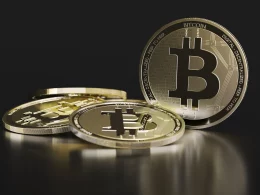Financial inclusion has become a critical issue globally, with millions of people still lacking access to basic financial services. The rise of FinTech (financial technology) has transformed the landscape, offering innovative solutions that bridge this gap. Through technology-driven platforms, FinTech has the potential to improve access to financial services, particularly for underserved populations. In this article, we will explore the role of FinTech in promoting financial inclusion, discussing its impact, challenges, and future potential.
Introduction to Financial Inclusion

Financial inclusion refers to the process of ensuring that individuals and businesses have access to useful and affordable financial products and services. These include transactions, payments, savings, credit, and insurance, all delivered in a responsible and sustainable manner. For many low-income individuals or those in remote areas, access to such services remains limited or nonexistent. Lack of financial inclusion can hinder economic growth, deepen inequality, and leave vast sections of society marginalized.
What is FinTech?
FinTech, short for financial technology, is an industry composed of companies that leverage technology to offer financial services in new and innovative ways. These companies use the internet, mobile devices, and digital platforms to enhance and streamline the delivery of financial services. FinTech spans various services, including digital payments, lending platforms, mobile banking, wealth management, and cryptocurrencies.
FinTech and Financial Inclusion: How They Intersect
FinTech has revolutionized the way financial services are provided, particularly to underserved populations. Traditionally, access to financial services was limited by geographical boundaries, the cost of maintaining physical banking infrastructure, and regulatory restrictions. FinTech has effectively broken down these barriers by:
1. Providing Digital Payment Solutions
Mobile wallets, peer-to-peer payments, and online remittances are now accessible to individuals in rural or underserved areas where traditional banking infrastructure is absent. For example, platforms like PayPal, Venmo, and M-Pesa allow people to send, receive, and store money digitally, with no need for a physical bank account.
2. Microfinance and Peer-to-Peer Lending
FinTech enables alternative lending models, like peer-to-peer lending and microfinance platforms, that offer small loans to individuals or businesses without requiring traditional credit histories. Companies like Kiva and LendingClub are examples of FinTech platforms that offer such services, giving underserved populations access to funds for entrepreneurship or personal needs.
3. Lowering Costs and Increasing Efficiency
FinTech platforms significantly reduce the costs of providing financial services by eliminating intermediaries and relying on automated systems. Lower costs make financial services more affordable for low-income individuals and small businesses, fostering financial inclusion.
4. Access to Insurance
Insurance services, traditionally unavailable or too expensive for many, are now being made accessible through digital platforms. InsurTech companies use data analytics and artificial intelligence to offer tailored insurance products at competitive rates, even to those without a credit score or financial history.
5. Educational Tools for Financial Literacy
Many FinTech platforms also offer educational tools that help users improve their financial literacy, a crucial step toward financial inclusion. For instance, apps like Mint and YNAB help users manage budgets, track spending, and set savings goals, empowering them to make better financial decisions.
The Impact of FinTech on Developing Economies
1. Case Study: Africa
One of the most prominent examples of FinTech’s impact on financial inclusion is seen in Africa, particularly through the mobile payment system M-Pesa. Launched in Kenya, M-Pesa allows users to store and transfer money through their mobile phones, even if they don’t have a bank account. Today, it is used by over 30 million people across multiple countries, offering services such as loans, savings, and insurance. The success of M-Pesa has transformed the financial landscape in Africa, increasing financial inclusion rates and stimulating economic growth.
2. Case Study: Southeast Asia
In Southeast Asia, the combination of FinTech solutions like mobile banking, e-wallets, and online lending platforms has significantly boosted financial inclusion, especially in countries like Indonesia and the Philippines. Platforms like Gojek and Grab are examples of super apps that integrate financial services with their transport and delivery services, further enhancing access to digital payments.
Challenges Facing FinTech in Promoting Financial Inclusion
Despite its potential, FinTech faces several challenges when it comes to promoting financial inclusion:
1. Regulatory Barriers
Different countries have varying regulatory frameworks, and in some regions, outdated or restrictive policies can limit the reach of FinTech services. Governments need to create flexible regulatory environments that encourage innovation while protecting consumers.
2. Digital Divide
Not everyone has access to the internet or smartphones, which are essential for using FinTech services. The digital divide, particularly in rural or low-income areas, can be a significant barrier to financial inclusion through FinTech.
3. Trust Issues
Many individuals are hesitant to trust digital financial services due to concerns about security, fraud, and data privacy. FinTech companies must ensure robust cybersecurity measures and transparent data policies to build user confidence.
4. Limited Financial Literacy
While FinTech offers educational tools, there is still a large segment of the population that lacks the financial literacy needed to use these services effectively. Bridging the gap between technology and financial literacy is crucial for ensuring long-term financial inclusion.
Comparative Analysis: Traditional Banking vs. FinTech in Financial Inclusion
| Aspect | Traditional Banking | FinTech |
|---|---|---|
| Accessibility | Limited in rural or underserved areas due to the cost of infrastructure | Accessible through mobile devices and the internet, even in remote regions |
| Cost | High maintenance fees, transaction fees, and minimum balance requirements | Low-cost or free services due to digital platforms and fewer intermediaries |
| Speed of Service | Slower due to bureaucracy and manual processes | Fast and often instant transactions due to automation |
| Loan Accessibility | Requires credit history, collateral, and extensive documentation | Easier access through microloans, peer-to-peer lending, and credit-free options |
| Financial Literacy | No or limited tools for financial education | Many FinTech apps offer educational tools to improve financial knowledge |
| Innovation | Traditional models with limited scope for innovation | Constantly evolving and introducing new solutions based on customer needs |
The Future of FinTech and Financial Inclusion
The future of FinTech in financial inclusion looks promising as new technologies like blockchain, artificial intelligence (AI), and big data analytics continue to emerge. These innovations will allow FinTech companies to offer more personalized, secure, and efficient financial services to underserved populations. For example:
1. Blockchain for Secure Transactions
Blockchain technology can facilitate secure, transparent, and low-cost financial transactions. This could be particularly useful for cross-border remittances, reducing the fees associated with sending money abroad.
2. AI for Credit Scoring
AI-driven credit scoring models can help people with no formal credit history to gain access to loans. By analyzing alternative data sources, such as utility bill payments and social media behavior, AI can offer more accurate credit assessments.
3. Big Data for Personalized Services
Big data analytics can be used to create personalized financial products and services based on individual behavior and needs. This will make it easier to tailor financial solutions for underserved populations.
Comparative Table: FinTech’s Role in Financial Inclusion
| Key FinTech Services | Impact on Financial Inclusion | Examples |
|---|---|---|
| Mobile Payments | Provides instant transactions and banking for people without bank accounts | M-Pesa, PayPal, Venmo |
| Peer-to-Peer Lending | Offers loans without needing traditional credit history or banks | Kiva, LendingClub |
| InsurTech | Expands access to affordable and tailored insurance products | Lemonade, Oscar Health |
| Microfinance Platforms | Offers small loans to low-income individuals and entrepreneurs | Grameen Bank, Microplace |
| Financial Literacy Tools | Helps users learn about budgeting, saving, and managing money | Mint, YNAB |
Conclusion
FinTech is playing a pivotal role in driving financial inclusion, offering innovative solutions that make financial services more accessible, affordable, and efficient. From digital payments to peer-to-peer lending and personalized financial tools, FinTech has the potential to bridge the financial gap for millions around the world. However, for FinTech to fully realize its potential, challenges such as regulatory barriers, the digital divide, and financial literacy need to be addressed. By overcoming these obstacles, FinTech can become a powerful engine for global financial inclusion, fostering economic growth and reducing poverty.











